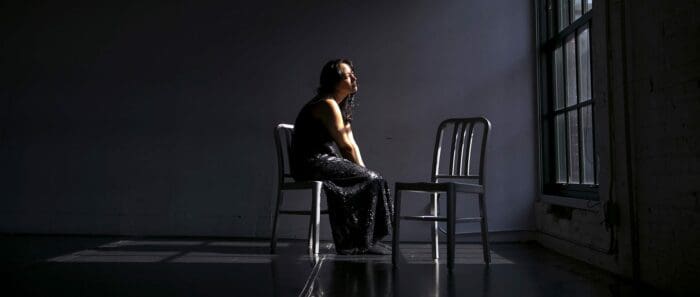 This dance-opera conceived and designed by co-directors Michael Greyeyes and Yvette Nolan and librettist Spy Denommé-Welch investigates the emotional history and contemporary cultural significance of Canada’s residential school system. The production itself is multi-faceted, combining orchestral music, a choir, opera, and modern dance.
This dance-opera conceived and designed by co-directors Michael Greyeyes and Yvette Nolan and librettist Spy Denommé-Welch investigates the emotional history and contemporary cultural significance of Canada’s residential school system. The production itself is multi-faceted, combining orchestral music, a choir, opera, and modern dance.
The story divides into three movements: in the first, the dancers enter in undergarments, representing anonymous Canadians. As they dress themselves in the garments onstage, they slowly become recognizable figures: a priest, a teacher, a schoolchild, an Indigenous family composed of a sister sent away to be assimilated into the mainstream, a brother who eventually finds her. The second movement takes place in a residential school, while the family moves into the house and witnesses the narratives in the school play out. In the third movement, Sojourner (the librettist) enters the space, and the dancers clear the clutter created by the violence at the school. The atmosphere is intended to be one of renewal, in which in the aftermath of the violence, and the recognition of it, Canadians can move forward with a more harmonious sense of solidarity.
The story doesn’t just depict a singular narrative in a linear fashion; instead, it invokes the indigenous idea that time is in fact circular: that our history is not something that is simply behind us but something that surrounds us.
You might think, on the surface, that this is a bit overwhelming, but the different elements actually fuse together well, creating a unity to the atmosphere that is actually at times somewhat understated. Using both dance and music to tell this story makes a lot of sense, and has a powerful effect. Music and dance are temporal, you need to experience them over time, and each section relates somehow and is given meaning by the movements that come before and after it. The experience of the production is harder to follow narratively than the programme would imply, but that doesn’t seem to matter that much. I didn’t really connect to the narrative they were trying to depict, but rather to the feeling of the production overall. Sitting in the audience, it felt like a psychoanalytic dream-like recreation of what Canada’s history feels like, how there is a desire for unity but also an impulse to avoid the work that needs to happen to get us there. This production forces the audience to confront a story shows us the need to witness before reconciliation is possible.
The music (combining several different composers including Bach and Spy Denommé-Welch) provides an emotionally dense landscape within which the dancers perform. Both choral and operatic music seem like appropriate backgrops in which to immerse these narratives – there is an intensity and a sorrow to our history that is reflected in the music, and one that should be foregrounded as we come up on Canada’s 150th. While many feel the need for celebration, there is also a need for reckoning: we cannot know where are, or, indeed, who we are, unless we embrace the fragmented and violent history that this country was built on.
